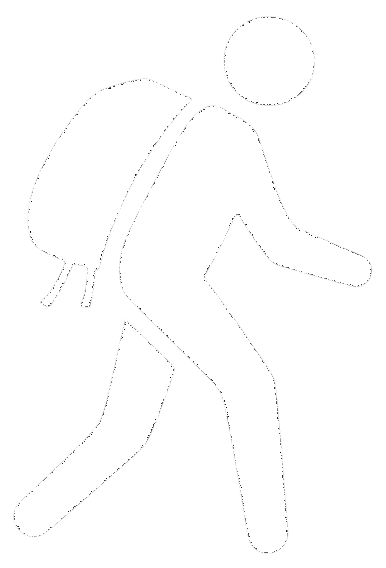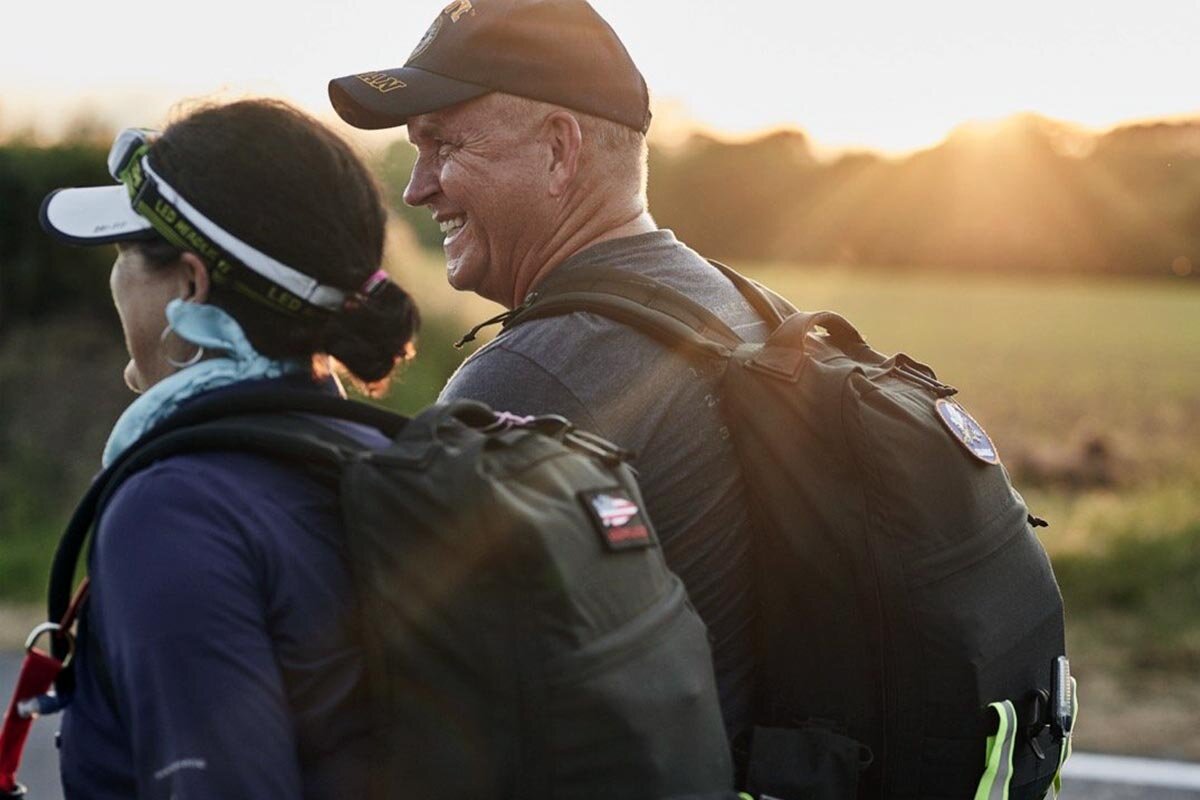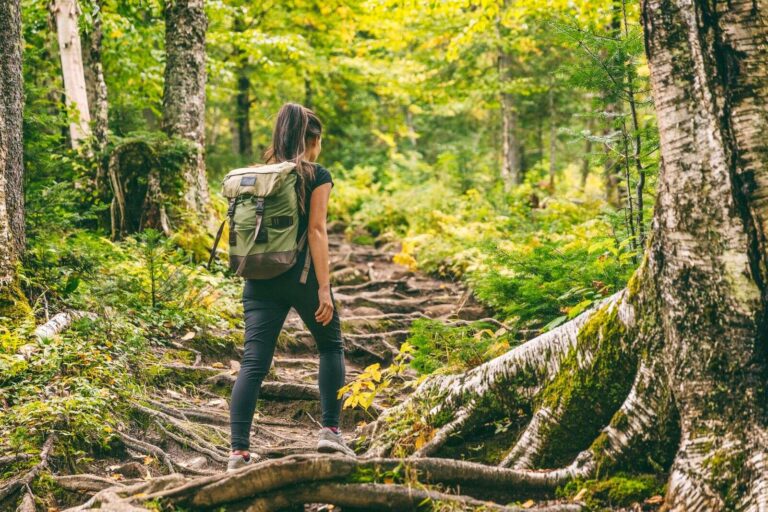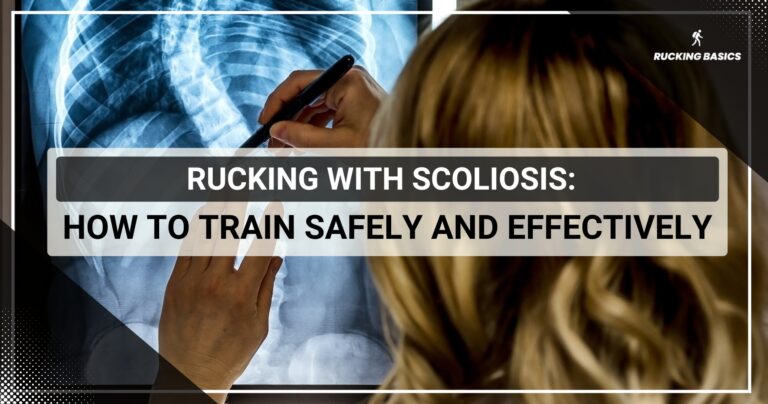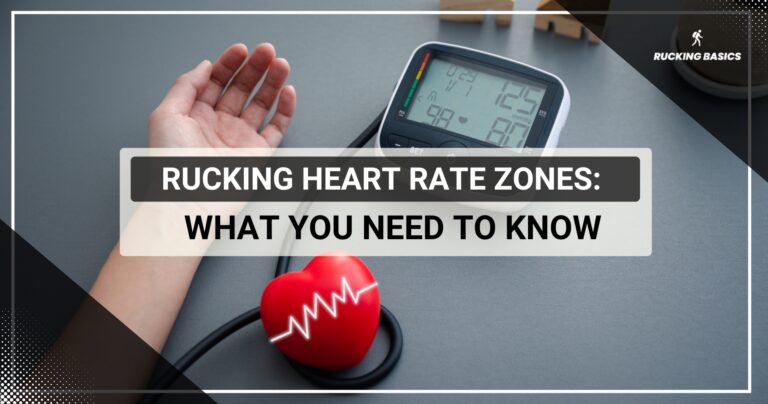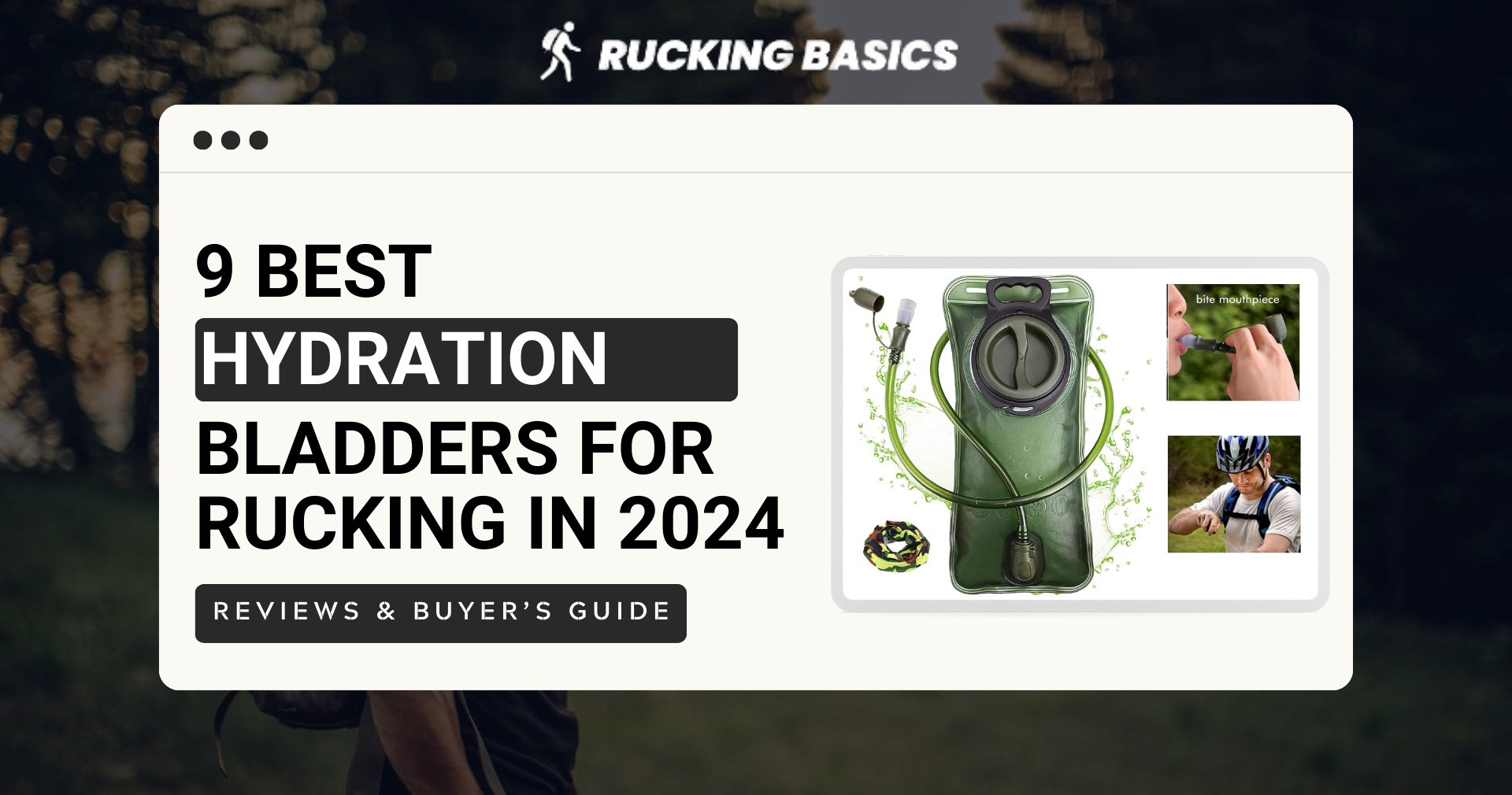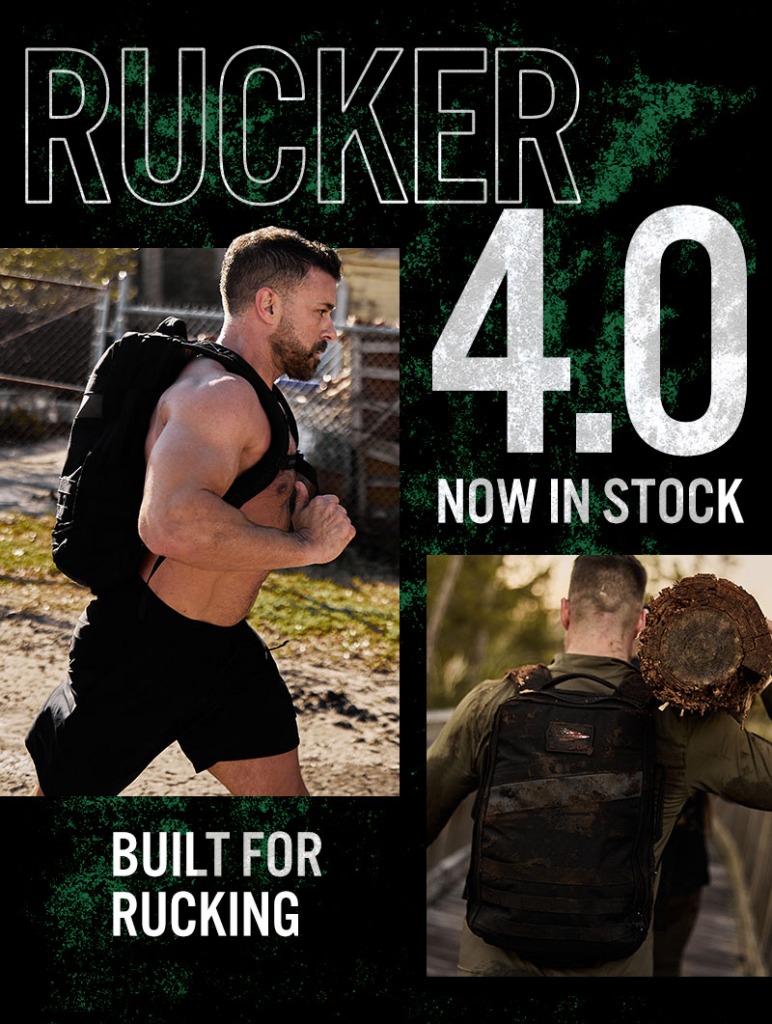As we age, prioritizing our health becomes increasingly important.
However, this does not mean that you should reduce physical activity, on the contrary. Forget Dr. McGill method and similar nonsense that promote keeping your spine always in neutral position or avoiding vigorous activities. Numerous studies have refuted such claims. (1) (2)
In my profession as a personal trainer, I have many older clients and I know that the idea of embarking on a vigorous fitness routine involving weight training often seems daunting. But you don’t have to lift weights — there’s a simple yet effective activity that’s gaining popularity among seniors: rucking.
In this guide, I will tell you everything you need to know about rucking for seniors, from benefits of additional weight while walking to practical tips for getting started and staying safe.
Understanding Rucking
Rucking is not some fancy, high-tech exercise routine. It is essentially walking with a weighted backpack, which is both aerobic exercise and strength training
If we take a look back at the history of mankind, we will find out that rucking has been around for thousands of years. For soldiers, hunters, and travelers, rucking was a daily activity.
In the last century, we stopped doing this activity that improves strength, endurance, and resilience. We even stopped walking with just our body weight, but now rucking is making a comeback.
In recent years, rucking has experienced a resurgence thanks to its simplicity and versatility. What began as a military training exercise has now become a mainstream fitness trend for people of all ages and backgrounds.
Physical Benefits for Seniors
Rucking offers plenty of physical benefits for seniors. I am not exaggerating when I say that the implementation of this activity can be a game-changer.
Let’s find out more together!
Cardiovascular Health
The natural aging process, obesity, and lack of physical activity are among the leading causes of cardiovascular disease in the middle-aged and elderly population.
And we can positively influence two of those three with racking. Walking with a weighted backpack increases your heart rate and thus better delivers oxygen-rich blood.
Since rucking is a mostly steady activity, you can strengthen the heart muscle and improve circulation without exposing your heart to tremendous stress that can be potentially dangerous.
So, the next time you go rucking, remember that it has been scientifically proven that physical activity plays an essential role in healthy aging, maintaining good physical condition and improving the quality of life of older people. (3)
Strength and Endurance
Strength and endurance are much more important for everyday life than you think. We usually associate these terms with weightlifters, athletes, marathoners, or at least advanced exercisers.
Yet, think about the everyday things you do. Do you need the muscle strength and endurance to bring groceries or vacuum the whole house? Yes, of course!
Carrying extra weight while walking is not easy, but it’s precisely what makes rucking an effective strength and endurance workout.
With each step, you engage multiple muscle groups — mostly legs and core. Over time, this repetitive resistance training will improve functional independence.
Weight Loss
Excess weight is a problem for both young and older adults. Still, it is more difficult for the elderly to trigger weight loss due to a slower metabolism and the inability to burn many calories through sports activities.
Rucking comes to the rescue. While weight loss might not be the primary goal of rucking, it can help.
Unlike high-intensity workouts that leave you exhausted and drained, rucking is a sustainable approach to weight loss.
Bone Density and Joint Health
You heard about sarcopenia and osteoporosis, two common age-related conditions. One is progressive muscle loss, and the other is bone weakening.
In many cases, we cannot stop them completely, but we can significantly slow down their progress. Weight-lifting has been proven to improve bone density and slow down the loss of muscle mass. (4)
If you don’t want to go to the gym, take advantage of weight-bearing exercises like rucking. This way, you can stimulate bone growth and strengthen the skeletal system.
When you walk with a weighted backpack, the added resistance encourages your bones to adapt and become denser over time. It is the healthiest way to prevent osteoporosis-related fractures, plus improve quality of life.
Mental Benefits Of Rucking For Seniors
Rucking isn’t just a workout for your body. In today’s world, when we are all overwhelmed with stress, we must preserve our minds like our bodies.
So next time you need a mental boost, grab your backpack, head outdoors, and start rucking.
Stress Reduction
For me, any kind of physical activity is the best medicine for excessive stress.
However, rucking has one additional advantage compared to the game of tennis or basketball — nature.
The serenity of nature offers a much-needed escape from the hustle and bustle of everyday life. Focus on soothing sights and sounds and let nature do its magic. And the possibilities are endless – you can choose a forest, river, or a picturesque park.
Cognitive Function
Numerous studies have shown that regular physical activity, including rucking, can positively impact cognitive function and brain health, particularly in older adults. (5)
You can expect to sharpen your memory and focus after some time.
Mood Enhancement
Ever heard of the “runner’s high”? Well, the same principle applies to rucking.
When you exercise, your body releases endorphins, feel-good chemicals that help reduce pain and induce feelings of euphoria and well-being.
Whether you’re feeling downhearted or simply in need of a pick-me-up, a brisk ruck through nature is like hitting the reset button for your mood.
Getting Started with Rucking
Rucking does not belong to the group of expensive hobbies, and it is not complicated to start, but before you hit the trails, you have to do a few things to ensure a safe and enjoyable experience.
Gear Up Properly
Like any other activity, having the right gear can make all the difference. Invest in basic rucking gear. You need a sturdy backpack with padded shoulder straps and a waist belt for proper ruck weight distribution and thus good posture. Or you can try a weighted vest for a rucking workout.

You still need high-quality shoes and socks, and you are ready. Of course, shorts and a shirt made of recycled polyester fibers that move sweat away from your body are also welcome additions.
Start Slow
Begin with a lighter loaded backpack than you think you can handle, and gradually increase the weight as you build strength and endurance.
If you try to push from day one, there is a high probability that you will experience a rucking injury. Or at least have the worst delayed onset muscle soreness (DOMS) ever, which will make you stop before you’ve even started. (6)
This rule also applies if you are rucking post injury. Consider your “slow start” to be active recovery.
Listen to Your Body
Pay attention to any discomfort or pain. Don’t ignore warning signs such as sharp pain or persistent discomfort. It’s normal to feel tired, especially when you’re pushing yourself out of your comfort zone, but pushing through pain is never a good idea, especially in older age. If something doesn’t feel right, stop. That’s my advice for both the gym and any other activity.
How Seniors Can Safely Enjoy Rucking
Never lose sight of safety.
Prior to your ruck, perform dynamic stretches to warm up your muscles. Afterward, finish the activity with static stretches.
Don’t forget to drink plenty of water before, during, and after your ruck to stay hydrated. Pack nutritious snacks to fuel your body and replenish lost energy.
And finally, allow your body adequate time to rest and recover between rucking sessions.
Conclusion
Rucking it’s not about getting from point A to point B.
It is a potentially transformative activity that will have a far-reaching impact on your life.
Being in your 60s, 70s, or 80s doesn’t mean you’re destined to be a couch potato.
Is rucking good for seniors? Yes, absolutely. It will help you improve your physical and mental health while having fun at the same time.
So, don’t wait; start planning your first rucking session now, and tell us in the comment section whether you have started.
Frequently Asked Questions
How does rucking compare to swimming or cycling for older adults?
Each activity has advantages, but rucking stands out for its simplicity, accessibility, and full-body engagement. Unlike swimming, which requires access to a pool, or cycling, which may require specialized equipment, rucking can be done almost anywhere with minimal gear.
Can rucking help improve balance and coordination in older adults?
Yes, rucking can contribute to improved balance and coordination. Rucking can improve proprioception and body awareness, essential for balance and coordination.
References
- Langhammer B, Bergland A, Rydwik E. The Importance of Physical Activity Exercise among Older People. Biomed Res Int. 2018 Dec 5;2018:7856823. doi: 10.1155/2018/7856823. PMID: 30627571; PMCID: PMC6304477.
- Wai EK, Roffey DM, Bishop P, Kwon BK, Dagenais S. Causal assessment of occupational bending or twisting and low back pain: results of a systematic review. Spine J. 2010 Jan;10(1):76-88. doi: 10.1016/j.spinee.2009.06.005. Epub 2009 Jul 23. PMID: 19631589.
- Ciumărnean L, Milaciu MV, Negrean V, Orășan OH, Vesa SC, Sălăgean O, Iluţ S, Vlaicu SI. Cardiovascular Risk Factors and Physical Activity for the Prevention of Cardiovascular Diseases in the Elderly. Int J Environ Res Public Health. 2021 Dec 25;19(1):207. doi: 10.3390/ijerph19010207. PMID: 35010467; PMCID: PMC8751147.
- Layne JE, Nelson ME. The effects of progressive resistance training on bone density: a review. Med Sci Sports Exerc. 1999 Jan;31(1):25-30. doi: 10.1097/00005768-199901000-00006. PMID: 9927006.
- Mandolesi L, Polverino A, Montuori S, Foti F, Ferraioli G, Sorrentino P, Sorrentino G. Effects of Physical Exercise on Cognitive Functioning and Wellbeing: Biological and Psychological Benefits. Front Psychol. 2018 Apr 27;9:509. doi: 10.3389/fpsyg.2018.00509. PMID: 29755380; PMCID: PMC5934999.
- https://www.physio-pedia.com/Delayed_onset_muscle_soreness_(DOMS)
